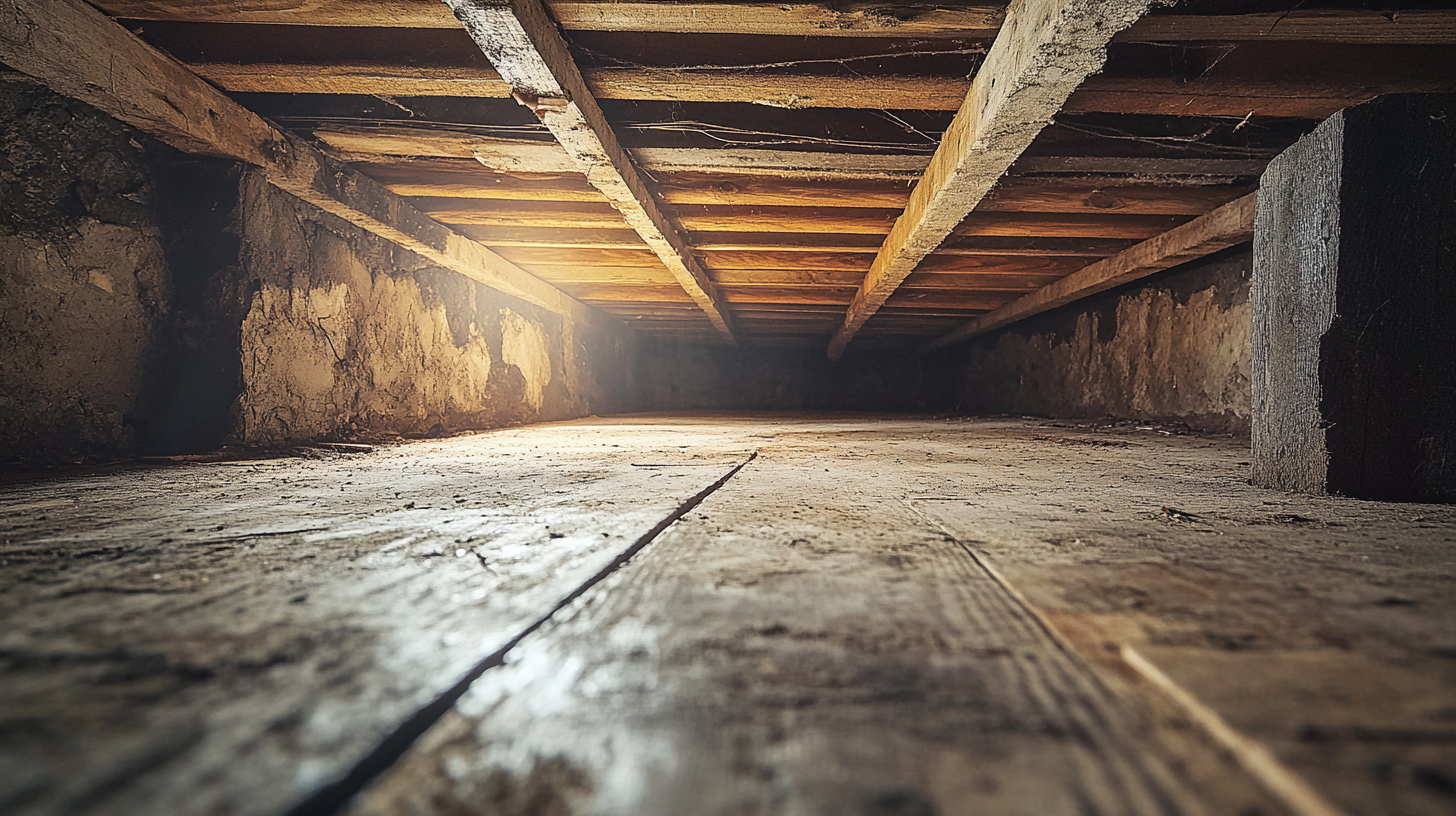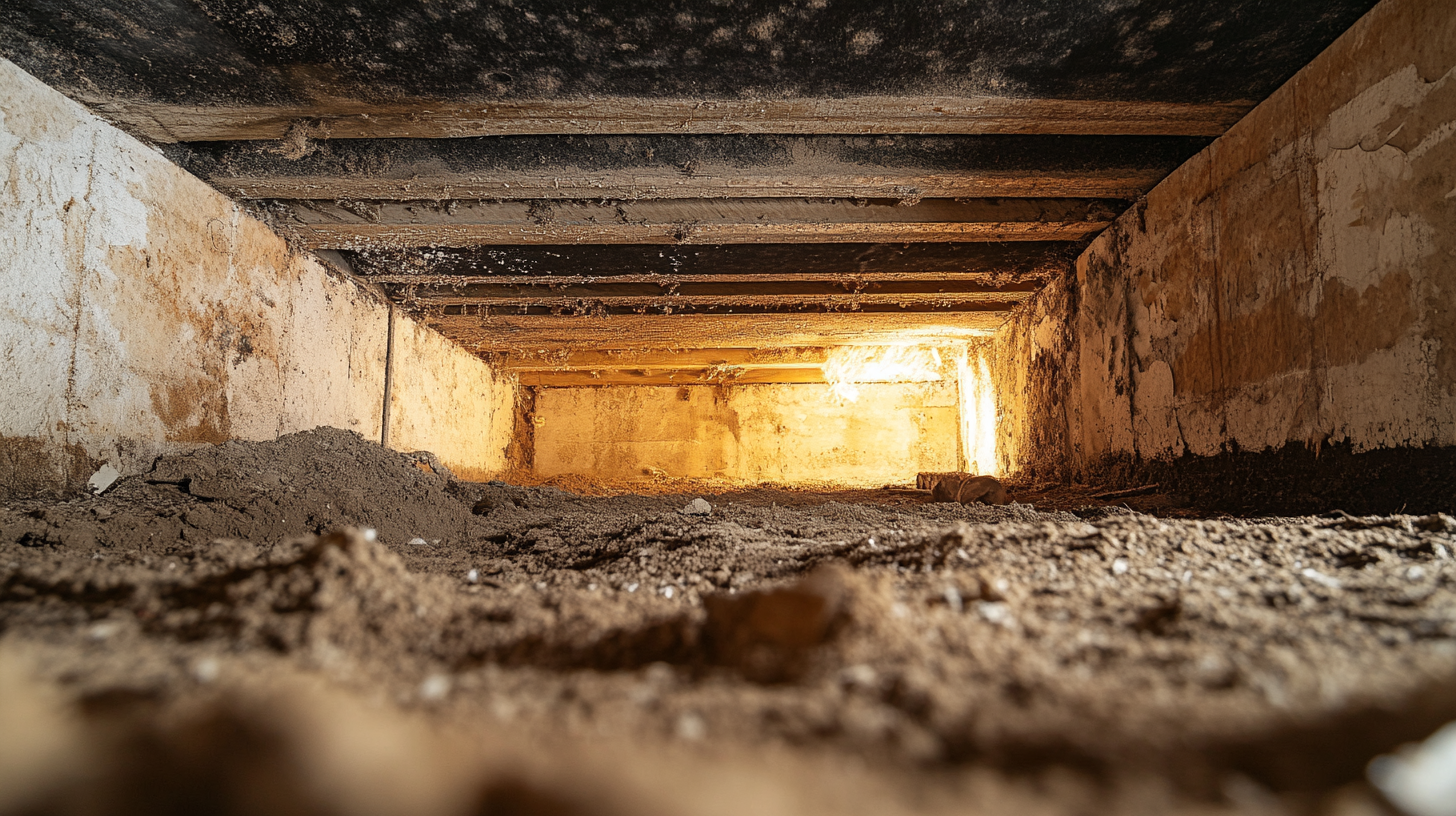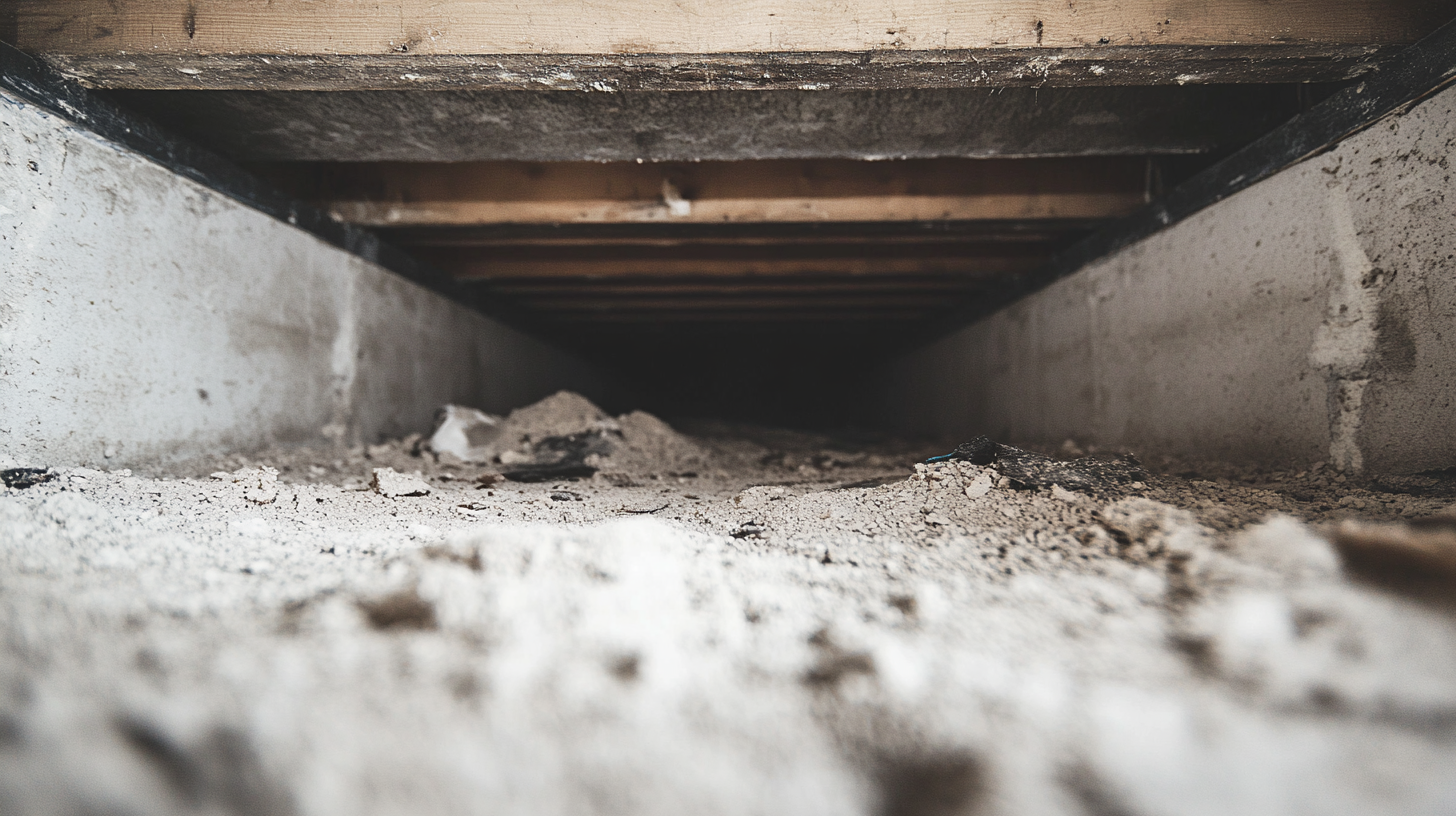The Science of Soot: Understanding What You're Removing

Soot, a fine black or dark brown powder, is a pervasive byproduct of the combustion process, stealthily infiltrating our homes and industrial environments. This seemingly innocuous residue is more than just a cleaning nuisance; it is a complex mixture of particles that can affect air quality, health, and the integrity of buildings and machinery. But what exactly is soot, and why does it seem to be everywhere?
This blog delves into the heart of soot formation, shedding light on its chemical composition and the common sources that contribute to its widespread presence in our daily environments. From the cozy warmth of our living room fireplaces to the bustling operations of industrial sites, soot generation is an inevitable outcome of burning carbon-based materials.
Understanding soot is crucial for recognizing its impact on our health and safety. In households, soot can emanate from simple activities like cooking, lighting candles, or using oil lamps. In industrial settings, it's often a byproduct of manufacturing processes, energy production, and vehicular emissions. Regardless of its source, soot accumulation poses significant challenges, necessitating effective management strategies to mitigate its effects on indoor air quality and to prevent potential health risks.
Join us as we explore the intricate world of soot, offering insights into its formation, the reasons behind its common occurrence in various settings, and the best practices for controlling its presence. Whether you're aiming to improve your home's air quality or manage industrial emissions, understanding soot is the first step towards creating healthier, cleaner environments.
What is Soot?
Soot is more than just the black residue that collects on your fireplace hearth or the exhaust from vehicles; it's a complex mixture with significant implications for health, the environment, and cleaning practices. Understanding soot's composition and properties is essential for effectively addressing its presence in our surroundings.
Composition of Soot
Soot is composed of carbon-based particles that arise from the incomplete
combustion of organic materials, such as wood, fossil fuels, and other carbon-containing substances. Here’s a closer look at what makes up soot:
- Particles and Chemicals: Soot particles are primarily carbon, but they can also carry a variety of chemicals absorbed from their combustion environment, including sulfates, metals, and organic compounds. These substances contribute to soot's toxicity and potential health risks.
- Sources of Soot: Common sources include residential fireplaces, vehicle exhausts, industrial processes, and wildfires. Each source contributes differently to the composition of soot, influenced by the type of fuel burned and the conditions of combustion.
Understanding the diverse sources and composition of soot is crucial for identifying
strategies to reduce its production and mitigate its impacts.
Physical and Chemical Properties
The physical and chemical characteristics of soot particles play a significant role in their behavior, effects on health, and the challenges they present for removal:
- Size and Shape: Soot particles are extremely small, often in the nanometer to micrometer range, allowing them to remain airborne and infiltrate deep into the lungs when inhaled. Their irregular shapes and tendency to form aggregates or clusters make them sticky and difficult to clean.
- Aggregation: The process of aggregation affects soot's optical properties and its ability to absorb and scatter light, contributing to air pollution and climate change.
- Removal Challenges: The small size and complex chemical makeup of soot particles make them challenging to remove from surfaces and air. Their ability to bind with surfaces requires specialized cleaning techniques, particularly for porous materials where soot can penetrate deeply.
Health and Environmental Impact of Soot
Soot, a byproduct of incomplete combustion, is not just a superficial nuisance; it poses serious health risks and contributes to environmental degradation. Understanding the full scope of soot's impact is crucial for addressing its presence in our lives and mitigating its effects on our health and the planet.
Health Risks Associated with Soot Exposure
The health implications of soot exposure can be immediate and long-term, affecting individuals differently based on their health status and the duration of exposure:
- Short-term Health Effects: Exposure to soot can cause respiratory symptoms such as coughing, wheezing, and shortness of breath, as well as eye and throat irritation. These effects are particularly noticeable in individuals with pre-existing respiratory conditions.
- Long-term Health Effects: Prolonged exposure to soot has been linked to more serious health issues, including heart disease, lung cancer, and chronic respiratory conditions like asthma and bronchitis. Soot particles, due to their small size, can penetrate deep into the lungs and bloodstream, causing systemic health problems.
- Vulnerable Populations: Children, the elderly, and those with pre-existing health conditions are especially vulnerable to the effects of soot. Their exposure can lead to exacerbated health issues and a higher risk of developing new conditions.
Soot's Environmental Footprint
Beyond its health effects, soot plays a significant role in environmental issues, contributing to air pollution and climate change:
- Contribution to Air Pollution: Soot particles are a major component of particulate matter (PM), one of the most harmful forms of air pollution. They reduce air quality and visibility, affecting both urban and rural areas.
- Impact on Climate Change: Soot absorbs sunlight, leading to atmospheric warming, and when deposited on snow and ice, it can accelerate melting by increasing the absorption of solar radiation. This contributes to global warming and climate change by altering the Earth's albedo effect.
- Environmental Degradation: The presence of soot in the environment can harm ecosystems and wildlife. It affects water quality, soil fertility, and plant health, leading to broader ecological consequences.
Understanding the health and environmental impact of soot underscores the importance of reducing emissions from combustion sources and implementing strategies to clean up existing soot pollution. Addressing the challenges posed by soot requires concerted efforts from individuals, communities, and policymakers to protect public health and preserve the environment for future generations.
Soot Formation and Accumulation
Soot, a fine particulate matter resulting from incomplete combustion, is a pervasive issue affecting both indoor air quality and the broader environment. Its formation and accumulation can be traced back to a variety of sources, ranging from everyday household activities to large-scale industrial processes and natural events.
Understanding where soot comes from and the conditions that affect its presence is key to managing its impact.
Common Sources of Soot in Homes
The comfort of our homes can sometimes come with unintended consequences, such as the production of soot through common activities:
- Cooking: High-temperature cooking, especially using oil or gas, can produce soot particles that settle on surfaces and affect air quality.
- Burning Candles: While they create a cozy atmosphere, candles, particularly those made from paraffin wax, can release soot into the air as they burn.
- Fireplaces and Wood Stoves: The burning of wood and other fuels can lead to soot accumulation on walls, ceilings, and in the chimney.
These sources highlight the importance of ventilation and proper maintenance of appliances to minimize soot production in our living spaces.
Industrial and Natural Sources
Beyond the confines of our homes, soot is produced on a larger scale, significantly affecting environmental health:
- Wildfires: Natural wildfires are a major source of soot, releasing large quantities of particulate matter into the atmosphere, which can travel long distances.
- Industrial Emissions: Factories, power plants, and vehicles emit soot as a byproduct of burning fossil fuels, contributing to air pollution and posing health risks to nearby populations.
These sources underscore the role of environmental regulations and clean energy initiatives in reducing soot emissions on a global scale.
Factors Influencing Soot Accumulation
The deposition and accumulation of soot in different environments are influenced by several factors:
- Airflow and Ventilation: Poor ventilation can exacerbate soot accumulation indoors, while natural wind patterns can affect the distribution of soot from wildfires and industrial sources.
- Surface Properties: Soot tends to accumulate more on rough, porous surfaces than on smooth, non-porous ones.
- Humidity and Temperature: High humidity can lead to the agglomeration of soot particles, making them heavier and more likely to settle on surfaces.
Understanding these factors is crucial for developing strategies to reduce soot accumulation, from improving indoor air quality to mitigating the impact of large-scale soot emissions on the environment.
Techniques for Soot Analysis and Identification
Soot, a complex mixture of carbonaceous particles, can vary widely in its composition and properties depending on its source and the conditions of its formation. Understanding the nature of soot is crucial for effective removal, health assessment, and environmental impact analysis. This guide explores the sophisticated techniques professionals use to analyze soot, as well as practical observations homeowners can make to identify soot types.
Professional Methods for Soot Analysis
Professionals employ a range of advanced techniques to analyze the composition, structure, and source of soot particles. These methods provide detailed insights that are essential for environmental science, forensic investigations, and health risk assessments:
- Electron Microscopy: This technique offers high-resolution images of soot particles, revealing their size, shape, and aggregation state. Electron microscopy can distinguish between soot from different combustion processes, such as diesel exhaust versus wood smoke.
- Spectroscopy: Various spectroscopic methods, including Raman spectroscopy and Fourier-transform infrared spectroscopy (FTIR), are used to identify the chemical bonds and molecular structures within soot particles. These techniques can reveal the presence of specific organic compounds and inorganic elements.
- Thermal Analysis: By measuring changes in soot properties as a function of temperature, thermal analysis techniques can provide information on the thermal stability and composition of soot.
These professional methods require specialized equipment and expertise but offer the most accurate and comprehensive analysis of soot.
DIY Observations and Assessments
For homeowners looking to identify and understand the type of soot within their environment, several practical observations can be made:
- Source and Color: Note the source of the soot (e.g., candle burning, fireplace, furnace malfunction) and its color. Soot from wood tends to be lighter and fluffier, while soot from oils and plastics may be darker and more greasy.
- Location and Pattern: Observe where the soot accumulates in your home. Soot near vents or specific appliances can indicate its source, while the pattern of deposition can suggest airflow and ventilation issues.
- Odor: Different types of soot can have distinct odors. For example, soot from biological materials might have a musty smell, while chemical sources might produce a sharper, more acrid odor.
While these DIY assessments cannot replace professional analysis, they can provide valuable initial insights into the type of soot present and guide appropriate cleaning and mitigation strategies.
Soot Removal: Connecting Science to Practice
The battle against soot accumulation in our homes and environments is not just a matter of elbow grease; it's a complex challenge that requires a deep understanding of the scientific principles behind soot formation, properties, and behavior. By connecting science to practice, we can develop more effective strategies for soot removal, ensuring cleaner, healthier living spaces.
Scientific Principles Behind Soot Removal
Soot particles are not all created equal. Their varied chemical compositions, sizes, shapes, and aggregation states influence how they interact with surfaces and cleaning agents. Understanding these properties is crucial for selecting the right approach to soot removal:
- Chemical Composition: Soot can contain a mix of carbon, volatile organic compounds, and inorganic elements. Knowing the chemical makeup of the soot you're dealing with can guide the choice of cleaning agents, as some substances are better at dissolving or neutralizing specific compounds.
- Particle Size and Aggregation: The tiny size of soot particles and their tendency to form aggregates make them sticky and challenging to remove. Techniques that target the disaggregation of particles or that can capture fine particulates are often required.
- Surface Interaction: Soot particles can adhere strongly to surfaces, especially porous ones. Understanding the nature of these interactions can inform the use of techniques like vacuuming, which can remove loose particles without pushing them deeper into surfaces, or gentle washing, which can dissolve and lift soot away.
Challenges in Soot Removal
Despite our best efforts, soot removal can be fraught with challenges, stemming from its complex nature and the variety of surfaces it affects:
- Stubborn Adhesion: Soot particles can bind tightly to surfaces, making them difficult to remove without the right tools and techniques. This is particularly true for porous materials like fabric and wood, where soot can penetrate below the surface.
- Health and Safety Risks: The potential health risks associated with soot exposure, especially from soot with toxic chemical components, necessitate careful handling and the use of protective gear during removal.
- Risk of Damage: Incorrect cleaning methods can damage surfaces or spread soot further. Science-based strategies help minimize these risks by matching cleaning methods to the type of soot and surface involved.
Overcoming these challenges requires a blend of scientific knowledge and practical expertise. By understanding the principles behind soot behavior and removal, we can choose methods that are not only effective but also safe for our health and our homes.
FAQs
Contact Fast Response Cleaning & Restoration Today!
Fast Response Cleaning & Restoration will do everything we can to ensure your experience with us is excellent.
Request A FREE Estimate
Request A FREE Estimate Form
CHECKOUT RECENT POST



Have an Emergency? We're Here to Help!
When it comes to disaster cleanup, we are a seasoned veteran in the industry and have helped hundreds of property owners just like you.
Our disaster recovery teams are available 24-7 to quickly clean up and repair disasters of all types.
